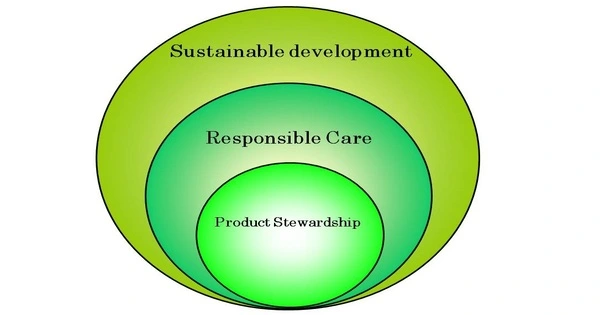Product stewardship is a method of controlling the environmental implications of various products and materials at various phases of manufacture, use, and disposal. It is a concept and strategy centered on the responsible and sustainable management of products throughout their full lifecycle, from design to disposal or recycling. It comprises a variety of techniques and ideas aimed at decreasing product environmental and health impacts, saving resources, and improving societal well-being.
It recognizes that those involved in the production, sale, use, and disposal of products have the responsibility for ensuring that those items or materials are managed in a way that minimizes their impact on the environment and human health and safety throughout their lifecycle. This method focuses on the product itself, and everyone involved in the product’s lifespan is encouraged to take responsibility for reducing its environmental, health, and safety implications.
Product stewardship is often associated with the following key principles and activities:
- Product Design: Designing products with sustainability in mind, including considerations for material selection, energy efficiency, and ease of recycling or disposal.
- Life Cycle Assessment (LCA): Conducting a comprehensive assessment of a product’s environmental impact at every stage of its life, from raw material extraction to manufacturing, transportation, use, and end-of-life.
- Extended Producer Responsibility (EPR): This is a policy approach that makes manufacturers and producers responsible for the entire lifecycle of their products, including the collection and recycling of products once they reach the end of their useful life.
- Waste Reduction: Implementing strategies to reduce the generation of waste and minimize the environmental impact of waste disposal, such as encouraging product repair, reuse, and recycling.
- Hazardous Materials Management: Ensuring that products do not contain harmful or toxic materials and managing the safe disposal of hazardous substances in accordance with regulations.
- Resource Conservation: Promoting the efficient use of resources, including energy and raw materials, to minimize the environmental footprint of products.
- Consumer Education: Educating consumers about the responsible use and disposal of products to encourage environmentally friendly choices.
Product stewardship programs and regulations have been created in several nations and areas to address specific product categories such as electronic trash (e-waste), batteries, and packaging materials. To attain similar sustainability goals, these programs frequently require collaboration between government agencies, industrial associations, and environmental organizations.
Product stewardship is frequently used in industries that have a large environmental footprint, such as electronics, packaging, chemicals, and automotive manufacturing. It seeks to shift responsibility for a product’s environmental and social implications from customers and local governments to producers and manufacturers, encouraging more sustainable and environmentally friendly product choices.
















